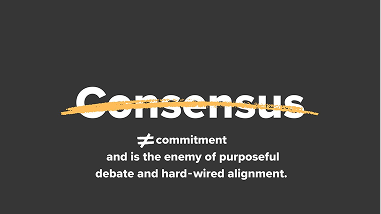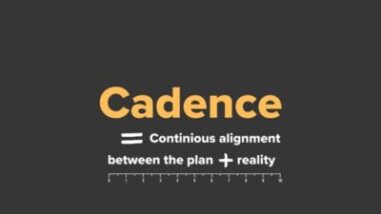Unlocking the Secrets of High-Performance

December 14, 2023
The Four Cs of Strategic Alignment
Understanding how high-performing leadership teams spend their time provides insight into what makes certain groups more successful in their execution.
At McKinney Rogers, more than two decades of insights gained from working with leadership teams around the world show a strong correlation between execution and time effectively spent in the following spheres:
- Aligning the organization behind the strategic intent
- Tracking performance and course correcting
- Understanding team dynamics and cultural enablers that impact success
Strategic alignment is a powerful enabler in closing the gap between strategy and results. This article will explore this topic, providing leaders with a simple framework to build capability in an area critical to successful business execution.
Clarity = What is clear is understood. What is understood gets done.
Clarity is elusive. In the fog of today’s operating environment, a requisite skill for leadership teams is the ability to form a clear mission from the complexity of the strategic context in which you compete. A core focus of our work is driving leadership to be singularly focused on an outcome, creating a shared understanding of the mission and urgency in mobilizing it across the organization.

Be committed to each other’s success.

Commitment starts with the leadership team and can only exist with trust, honesty, and belief. When leadership teams come together to decide on direction, resource allocation, and outcomes, the ability to manage conflict constructively is critical. Consensus is the enemy of purposeful debate and hard-wired alignment.
Leave your business unit, brand, or functional hat at the door and wear your CEO hat to the meeting.
The starting point in alignment must focus on the enterprise; thinking one and two levels up provides a different perspective. The success of a leadership team when building commitment is driven by challenging debate and taking ownership of decisions irrespective of one’s original individual bias and starting point.
Cascade = Communicate your plan to those who will deliver it.
Most professionals have experience with organizations that have cascaded strategy very effectively and, just as frequently, quite poorly.
At one extreme, strategy is a secret; neither the operational plan nor its strategic context is communicated. At the other extreme, disseminating plans does not extend beyond the first quarter. Often still absent are clear goals and measured values, leaving front-line employees without the knowledge needed to execute effectively.

An effective mission cascade must transmit the narrative from the CEO to the front line (and be reinforced at every opportunity after that). In parallel, an effective cascade must combine speed and a consistent methodology to mobilize key layers of the organization.
Cadence = Continuously align

Setting a cadence for monitoring strategy execution is where the rubber hits the road. An effective cadence is not a periodic check-in but the mechanic for understanding if the plan is “on mission.” It promotes a mission delivery mindset and the agility to respond to what is happening in the internal and external environment. More importantly, mission reviews become forward-looking to anticipate future challenges.
An effective mission cascade must transmit the narrative from the CEO to the front line (and be reinforced at every opportunity after that). In parallel, an effective cascade must combine speed and a consistent methodology to mobilize key layers of the organization.
Effective course correction, acceptable risk management, and the ability to pivot become key levers in how effectively teams analyze performance and adapt to stay on mission. Mastering these elements is essential for organizations to strengthen core execution disciplines.
McKinney Rogers’ expertise in Mission Leadership® guides leaders through best practices to close the gap between plans and tangible, impactful results.
Table of Contents





